7 Wastes of Lean Manufacturing
The seven wastes of Lean Manufacturing are what we are aiming to remove from our processes by removing the causes of Mura and Muri as well as tackling Muda directly. But what exactly are the seven wastes of Lean Manufacturing (or 7 Mudas)?
The Seven Wastes of Lean Manufacturing are;
- Transport
- Inventory
- Motion
- Waiting
- Over-Processing
- Overproduction
- Defects
For a more in depth discussion of each waste including causes, examples, and potential solutions click the links within each description.
How to Remember the 7 Wastes
There are a couple of Simple Mnemonics that you can use to help you remember the 7 Wastes. The first is to ask your self “Who is TIM WOOD?”
TIMWOOD
- Transport
- Inventory
- Motion
- Waiting
- Over Processing
- Over Production
- Defects
TimWood comes from Standard-Cooper in the UK where I first started my career as a young Quality Engineer in the Automotive Industry. It is now probably the most recognized way of remembering the seven wastes.
An alternative is
WORMPIT;
- Waiting
- Over Production
- Rejects
- Motion
- Processing
- Inventory
- Transport
Using either TIMWOOD or WORMPIT will help you to remember your seven wastes, very useful if you are training others and have to list them out on a board.
What Exactly is Waste?
The simplest way to describe waste is as “Something that adds no Value.” Our customers would not be happy to pay for any action that we take that does not add value to what they actually want and nor should we be.
Would you be happy if you received a bill in a restaurant that included a meal that was prepared in error? No; you would argue and demand that it was removed from your bill; yet if you buy a product in a store the price that you pay will contain costs that you would not want to pay. Would you want to pay for the machine operators wages whilst they sat idle waiting for a delivery, or for the rework processes that had to be undertaken because the machine was incorrectly set, or even for storing your product for three months before it was delivered to the store? These wastes are included within the cost of your products, either inflating the price you pay or reducing the profit of the company.
Why Remove Waste?
Your companies Profit is your selling price less your costs, no matter how you think about the selling price it is very much dictated by the market not by yourself. If you charge too much then your customers will go elsewhere, even if you charge too little you may lose customers as they will perceive there may be something wrong with what you are offering. Therefore the only way you have to improve your profits are to reduce your costs; this means removing all elements of waste from your processes.
In addition to improving your profits you will find that waste has a major impact on your customer’s satisfaction with your products and services. Your customers want on time delivery, perfect quality and at the right price. Something that you cannot achieve if you allow the 7 wastes to persist within your processes.
The Waste of Transport
Transport is the movement of materials from one location to another, this is a waste as it adds zero value to the product. Why would your customer (or you for that matter) want to pay for an operation that adds no value?
Transport adds no value to the product, you as a business are paying people to move material from one location to another, a process that only costs you money and makes nothing for you. The waste of Transport can be a very high cost to your business, you need people to operate it and equipment such as trucks or fork trucks to undertake this expensive movement of materials.
The Waste of Inventory
Inventory costs you money, every piece of product tied up in raw material, work in progress or finished goods has a cost and until it is actually sold that cost is yours. In addition to the pure cost of your inventory it adds many other costs; inventory feeds many other wastes.
Inventory has to be stored, it needs space, it needs packaging and it has to be transported around. It has the chance of being damaged during transport and becoming obsolete. The waste of Inventory hides many of the other wastes in your systems.
The Waste of Motion
Unnecessary motions are those movements of man or machine which are not as small or as easy to achieve as possible, by this I mean bending down to retrieve heavy objects at floor level when they could be fed at waist level to reduce stress and time to retrieve. Excessive travel between work stations, excessive machine movements from start point to work start point are all examples of the waste of Motion.
All of these wasteful motions cost you time (money) and cause stress on your employees and machines, after all even robots wear out.
The Waste of Waiting
How often do you spend time waiting for an answer from another department in your organization, or waiting for a delivery from a supplier or an engineer to come and fix a machine? We tend to spend an enormous amount of time waiting for things in our working lives (and personal lives too), this is an obvious waste.
The Waste of Waiting disrupts flow, one of the main principles of Lean Manufacturing, as such it is one of the more serious of the seven wastes or 7 mudas of lean manufacturing.
The waste of Overproduction
The most serious of all of the seven wastes; the waste of overproduction is making too much or too early. This is usually because of working with oversize batches, long lead times, poor supplier relations and a host of other reasons. Overproduction leads to high levels of inventory which mask many of the problems within your organization.
The aim should be to make only what is required when it is required by the customer, the philosophy of Just in Time (JIT), however many companies work on the principle of Just in Case!
The Waste of Over-processing
The waste of Overprocessing is where we use inappropriate techniques, oversize equipment, working to tolerances that are too tight, perform processes that are not required by the customer and so forth. All of these things cost us time and money.
One of the biggest examples of over-processing in most companies is that of the “mega machine” that can do an operation faster than any other, but every process flow has to be routed through it causing scheduling complications, delays and so forth. In lean; small is beautiful, use small appropriate machines where they are needed in the flow, not break the flow to route through a highly expensive monstrosity that the accountants insist is kept busy!
The Waste of Defects
The most obvious of the seven wastes, although not always the easiest to detect before they reach your customers. Quality errors that cause defects invariably cost you far more than you expect. Every defective item requires rework or replacement, it wastes resources and materials, it creates paperwork, it can lead to lost customers.
The Waste of Defects should be prevented where possible, better to prevent than to try to detect them, implementation of pokayoke systems and autonomation can help to prevent defects from occurring.
Additional wastes
Waste of Talent; failing to make use of the people within your organization. This is an issue that many of our companies in the West fail to address. We still tend to operate within a command and control environment and take little real notice of what our employees really think and what they can contribute. Your employees are your greatest asset by far and can help you to drive out many of the other wastes.
Waste of resources; failure to make efficient use of electricity, gas, water. Not only does this waste cost you money it is also a burden on our environment and society as a whole.
Wasted materials; too often off-cuts and other byproducts are just sent to landfill rather than being utilized elsewhere.
Eliminating the Seven Wastes
Eliminating the seven wastes is something that can be done through the implementation of Lean and the various lean tools, however the focus of your implementation should not be to identify and remove waste. Instead you should use the principles of lean manufacturing to identify value according to the customer and make those value adding processes flow through your organization at the pull of the customer. This approach helps you to make your value adding processes more efficient and causes the waste to literally “dissolve.”
Approaching lean from a perspective of removing the 7 wastes rather than making value flow however usually ends up with us making non-value adding processes more efficient and we get better and better at doing things that the customer does not want. To eliminate the 7 wastes of lean we have to focus on the lean principles and value as perceived by our customers.

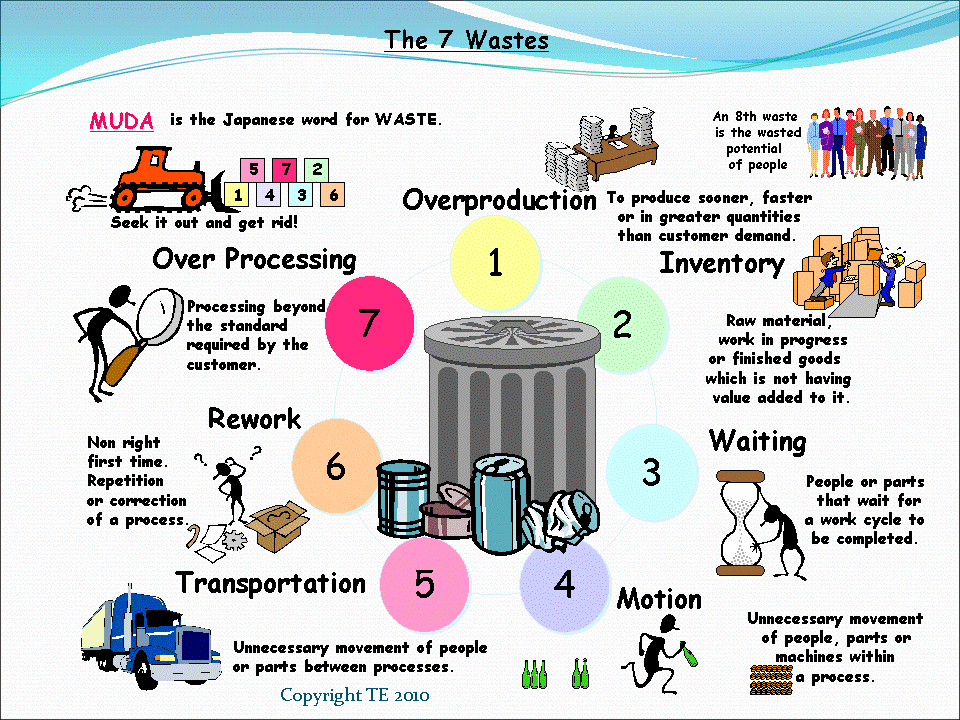
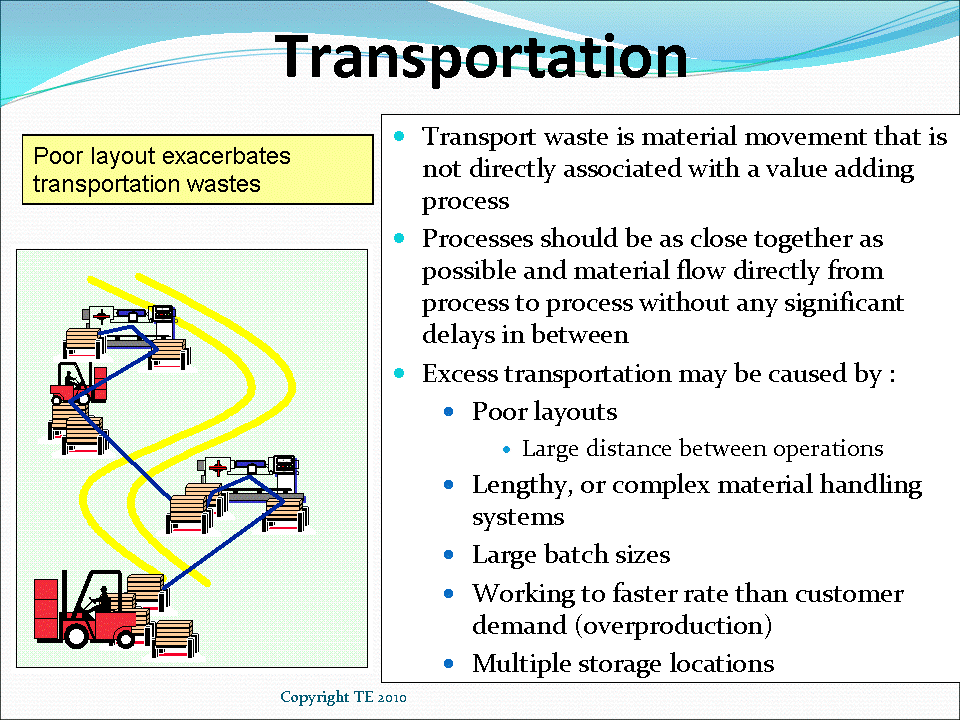
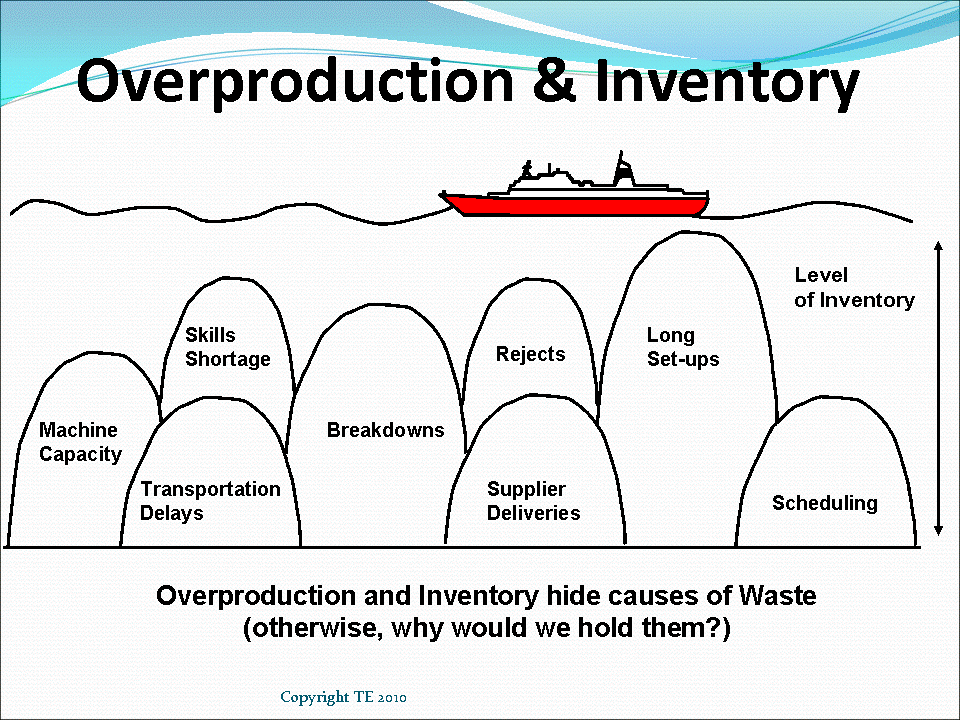
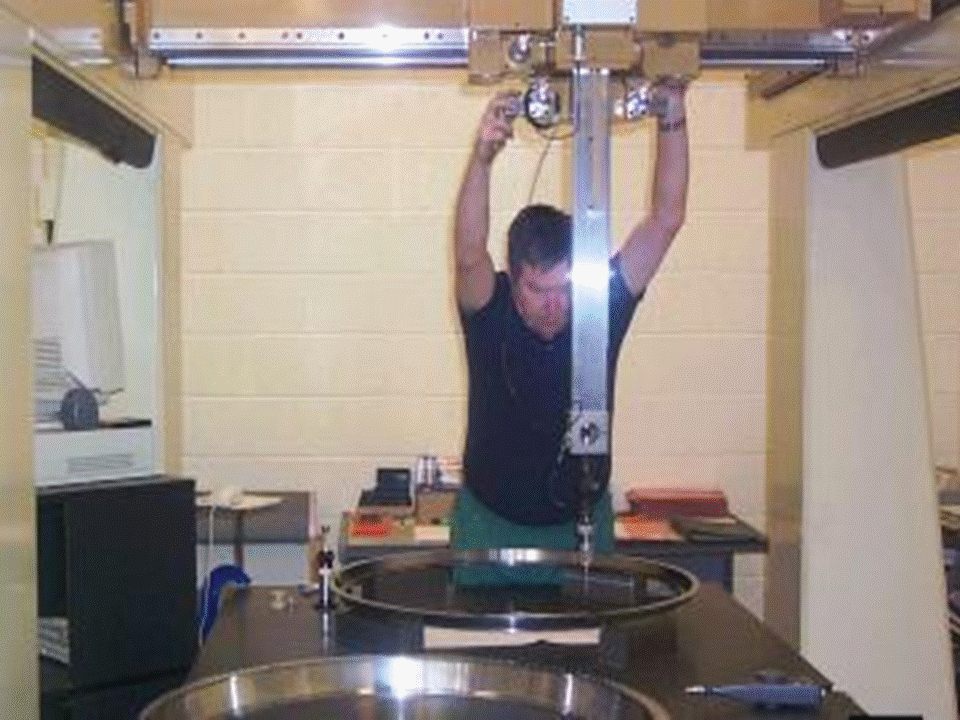
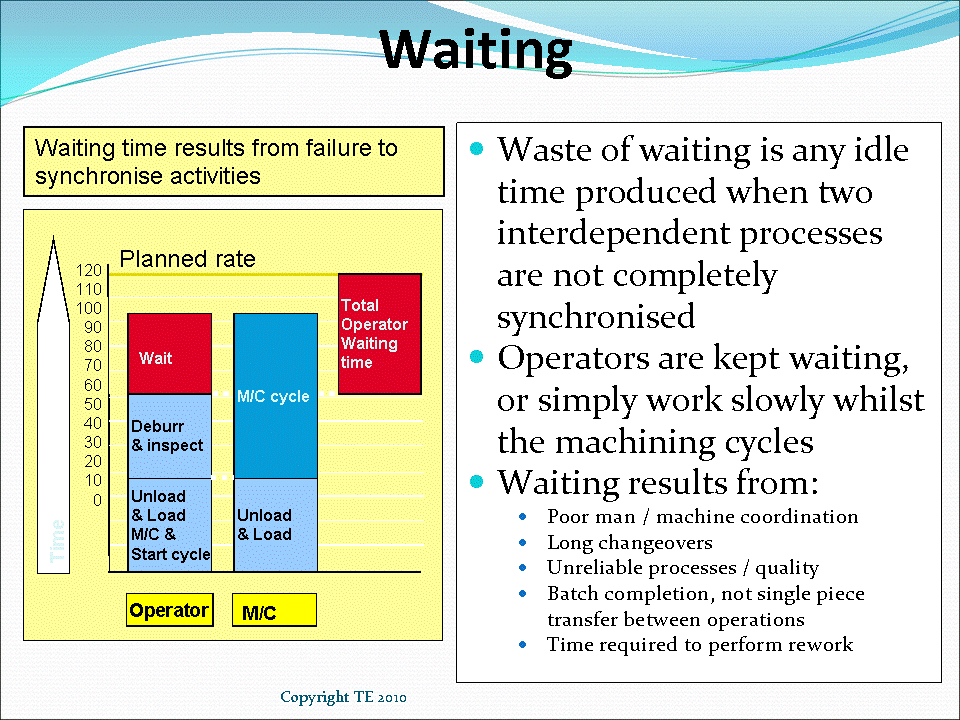
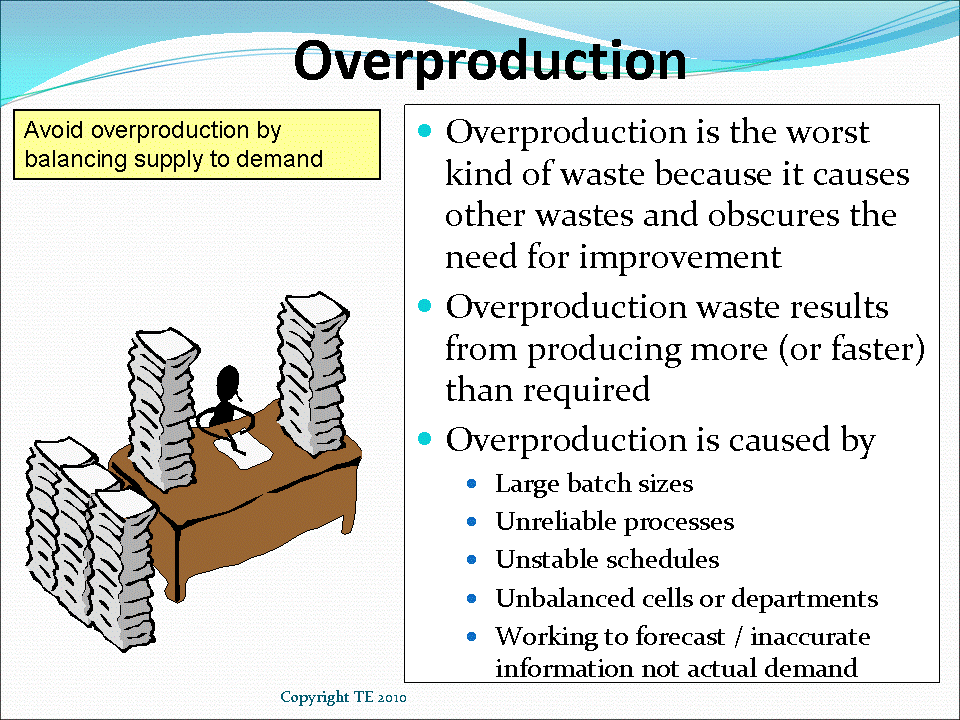
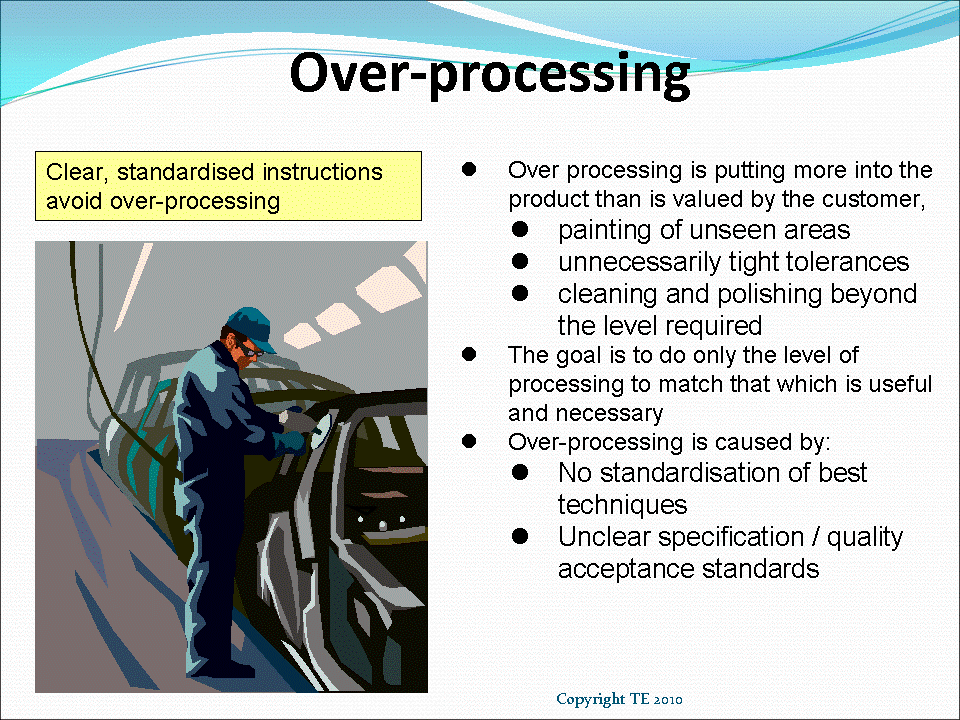
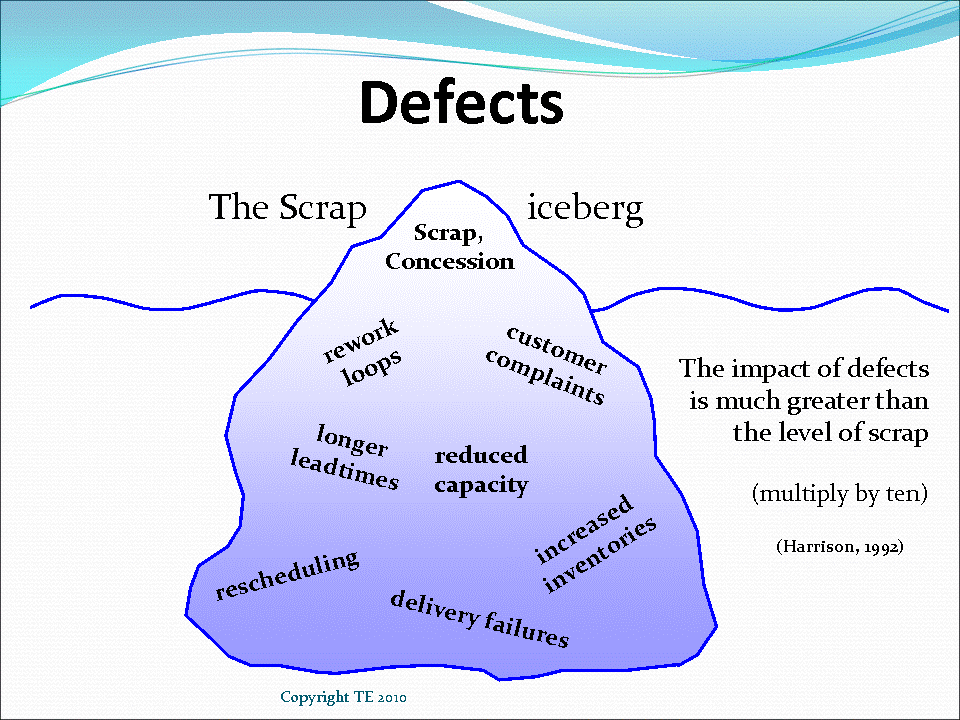
Another helpful acronym (8 wastes) = DOWNTIME. Defects, Over-production, Waiting, Non-utilized talent, Transportation, Inventory, Motion, Extra processing.
may be the short name represents “DOT WIMP)
Another appropriate trait to the subject topic would be “DEALING WITH INEFFICIENT SYSTEM“because the efficiency has direct relevance to the `RESULT=OUTPUT` of the task !!
Hi I wanted to reference the mnemonic TIM WOOD but could only find your account of who said it first.
I Googled Standard-Cooper and only got Cooper Standard.
Similarly in automotive industry but a U.S. business who changed to that name in 70’s I think
So I checked them out thinking perhaps Mr Standard died and Mr Cooper decided to put his name first.
I also thought of British cars Standards and Coopers but got nowhere.
Are you able to resolve the mystery?
Kind Regards,
Sue,
UK Procurement & Supply Education
Hi Sue,
Company was previously known as Standard Products and is a US based company, they later merged with Cooper Rubber. It had several plants in the UK and the acronym TIMWOOD was first coined in the Plymouth plant. Hope that provides you with the info that you need.
You will also find this origin stated in the “Lean Toolbox” by John Bicheno.
You are a little behind on Waste. There are now 9 identifiable Waste. Number 8 is human potential, companies not using the input of all employees’ experiences, exposure, skills, and so on. Number 9 is now confirm and was recently introduced because of its pervasiveness in our society, across all businesses, and manufacturing and that is the efficient, affective, and effective use of computer applications and computing power. Employers using spreadsheet apps as file storage or word processors or databases as data file storage tables without. Many use calculators with spreadsheets to type figures and so on. It is the Waste of the 21st century.